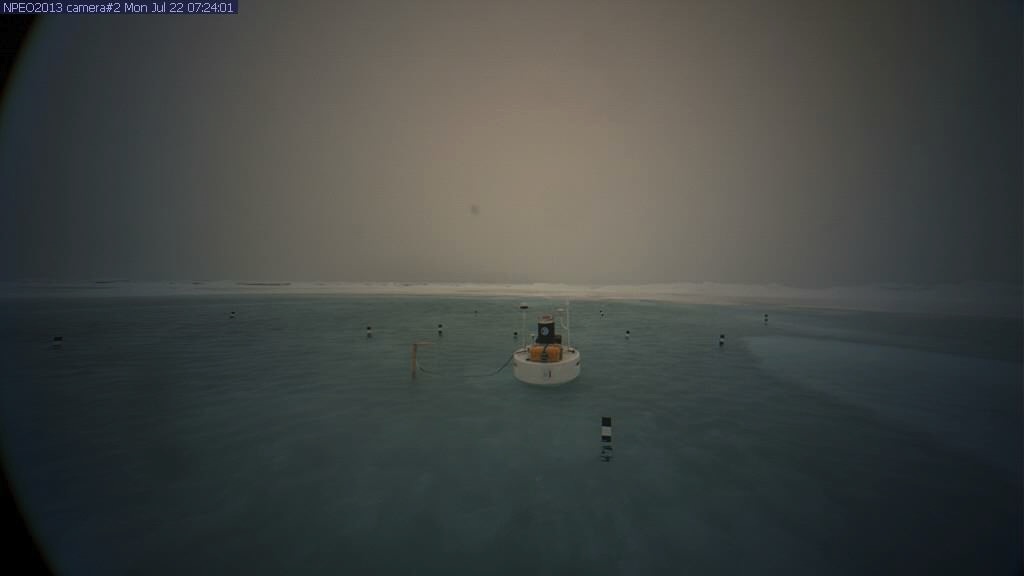By Kieran Cooke, Common Dreams
A cow grazing on the lush pasturelands of Cornwall in southwest England and a seal swimming in the ice cold waters of the Arctic might not appear to have much in common. The link between the two is tuberculosis, with a strain of the disease threatening cattle populations in Britain and elsewhere now showing up among seals in the high Arctic.
Dr Claire Heffernan, a trained vet and a specialist in global health and disease interaction between animals and humans, says that as the climate warms in Arctic regions, more and more diseases from Europe and elsewhere are spreading there, threatening both animal and human populations.
“In the past diseases might not have survived in the cold temperatures and the ice of the Arctic but as the region warms a new dynamic is introduced” Heffernan told Climate News Network.
“We need to fundamentally alter the way we look at disease in the context of climate change. We should recognize disease as a harbinger of a warming world.”
Dr Heffernan, a senior fellow at the Smith School for Enterprise and the Environment in Oxford and director of the livestock development group at the University of Reading says a wide variety of diseases have recently become evident among Arctic animal populations.
Toxoplasma, a parasite common in European cat populations, is now being found in polar bears in Greenland. Erysipelas, a disease of domestic pigs, is being found in Musk Oxen in the Canadian Arctic: the animals have also been found to have contracted Giardiasis, an intestinal parasite of humans. Meanwhile West Nile virus has been found in wolf pups in the Canadian Arctic.
Transmission
Such diseases could have been transmitted in a variety of ways, says Heffernan. The spread of Toxoplasma, for example, might be the result of people flushing cat faeces down toilets in the US and Europe which are then carried by tides to the Arctic. More people are visiting the region. Tourists defecating in the wilds might be the cause of the spread of Erysipelas.
“The Arctic is like a Heathrow airport in terms of bird, seal and other migration patterns so that’s another way disease is easily spread” says Heffernan. “And the disease pathway is not all one way – they can also be transmitted from the Arctic to elsewhere in the world.
“The point is no one is really joining up the dots between climate change and the spread of disease. There’s a whole new disease transmission cycle appearing in the Arctic which we just don’t understand.”
Impact on humans
Human disease levels in the Arctic are a continuing concern says Heffernan. Rates of TB among the Inuit of northern Canada are far higher than in the general population.
Major economic change and development now taking place in the Arctic means previously nomadic people are moving to towns in search jobs. Ice melt is also forcing more into settlements. With people living in close proximity to each other, disease tends to spread faster. Infant mortality in the Arctic, much of it due to diseases curable elsewhere in the world, is considerably higher than elsewhere.
“In 1930s there was a temperature spike in the Arctic which led to an outbreak of malaria” says Heffernan. “In subsequent years chloroquine was used to combat it. But what happens now, with temperatures rising and the prevalence of chloroquine resistant malaria?”
Anthrax alert
Early in the last century there were periodic outbreaks of anthrax in the Russian Arctic, resulting in the deaths of thousands of deer and cattle. Some Russian scientists and officials have warned that burial sites of those anthrax infected animals are now being exposed.
“As the Arctic melts, ancient pathogens can suddenly escape” says Heffernan. “No one knows for certain how many livestock burial sites there are in the Russian Arctic – I’ve seen estimates ranging from 400 to 13,000.”
In recent years there have been several anthrax outbreaks affecting both cattle and people reported in the region, particularly among communities of the indigenous Yakut, who often live near to such burial sites.
With Arctic temperatures rising at more than twice the rate of the rest of the world, Heffernan says there’s an urgent need to link disease and climate change and tackle health issues.
But there are a number of problems preventing concerted action: the Arctic is governed by different states with different laws. There’s not even a common agreement among Arctic nation states on the region’s boundaries. There’s a dearth of trained medical staff and research across the region. When it comes to statistics, the Arctic is something of a black hole with health data subsumed into more general country wide statistics.
“There’s very little biosecurity work going on in the Arctic” says Heffernan. “Yet we have the means to control so many of these diseases. There must be urgent, concerted, joined up action.”


